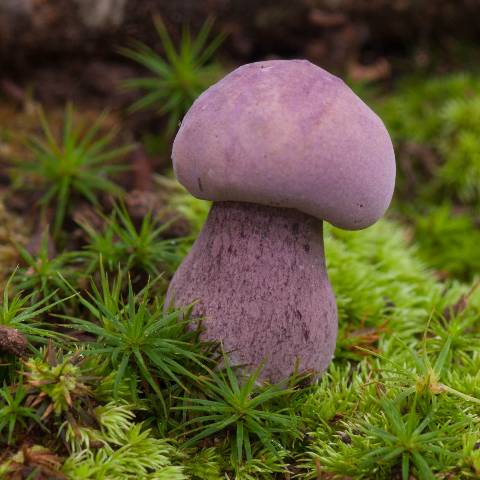

Fungi come in a bewildering variety of shapes, sizes and occupations. Most fungi feed on formerly living things, while other species prey on insects or infect the least exposed body parts of animals.
Despite their unpleasant habits, everyone should be aware that no ecosystem on Earth could survive without the services provided by our friends, the fungi. For instance, many tree roots depend on fungi like Boletus (the purple mushroom in the lead photo) for a ready supply of critical soil nutrients.
Let’s take a few moments to learn about two fascinating fungi that are found in backyards of Northwest Georgia. If you would like to discover more fungal fun, head out into the woods right after our first cool rain this autumn. There are thousands of mushrooms waiting below the ground right now, eager for a wet and mild opportunity to make their debut.
The Devil’s Dipstick (a.k.a. The Elegant Stinkhorn)
If you are hiking or gardening and you smell a horrible stench, reminiscent of a bouquet of feces, rotting flesh, and chlorine, you may be in the presence of the dreaded Devil’s Dipstick. As if the scent was not enough, this stinkhorn’s fruiting body also has a revolting shape, emerging spear-like from the underworld, covered in brown slime. At this point, you should be asking why would a fungus be so incredibly offensive to the senses?
The purpose of all fruiting bodies (aka mushrooms) is to disperse the spores of the actual fungus- an extensive underground network of root-like hyphae called a mycelium. The Devil’s Dipstick is a clever way to lure female flies in search of a decomposing, protein-rich food source for their maggots. Once the fly lands on the stinkhorn, however, she discovers she’s been hacked and flies off still full of eggs and covered with spores. Our funky fungus depends on flies making this same mistake several times, each time delivering spores to other dipsticks. And when fungal spores meet other fruiting bodies, new dipstick colonies can grow!
Back in Victorian times, the purest citizens would hastily remove elegant stinkhorns from garden paths to avoid uncomfortable thoughts. I hope you’ll agree that the real secret of the stinkhorn makes its disgusting habits worth thinking about.
Cordyceps, Killer Fungus
The horror story of Cordyceps is truly stranger than fiction, and it is happening in a woodland near you. The drama begins with a cricket hopping in the leaf litter in search of a meal. Unbeknownst to him, a microscopic fungal spore falls from a tree limb above and is drawn into one of his tracheae (holes in the exoskeleton through which insects breathe).
Days later, the cricket begins to feel strange and soon stops feeding entirely. He eventually loses all common cricket sense and climbs in a zombie-like trance up the nearest tree. The mycelium of the airborne fungus is taking over the cricket’s body and is now feeding on his internal tissues. In full view of his predators and without food, the cricket slowly walks out a long branch to a leaf near the edge of the tree.
in Tibet, however, goat herders are frantically searching for caterpillars infected with a similar fungus. The market for this parasitic fungus in Chinese cities is expanding wildly, and people will pay hundreds of dollars for it’s apparent anti-cancer, anti-aging, and libido-boosting properties. Similar parasitic fungi have produced medically important immuno-suppressors, like ciclosporin, that are used in organ transplants. If you like, see the attached article for more details on the growing fungal business in Central Asia.